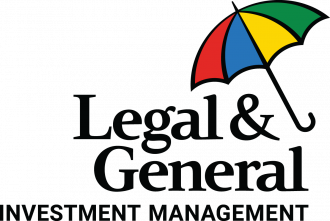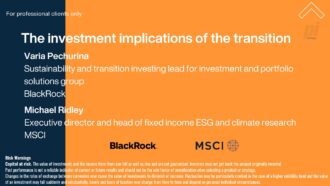Achieving a buyout for smaller pension schemes has traditionally been challenging. Not anymore. portfolio institutional spoke to a panel of people who play different roles in the de-risking market to find out how things are changing for the little guy.
The Panel:
Tim Dougall, head of fiduciary man- agement at Legal & General Investment Management (LGIM)
Julian Hobday, pricing and execution director, Legal & General Retirement Institutional
Roger Buttery, a trustee of five pension schemes
PI: It was a year like no other, but what were your experiences of 2020?
Roger Buttery: In all the years that I have been a pension scheme trustee, this has been the most challenging. But despite difficulties in some areas, member benefits in the five pension schemes I am involved in have been paid.
A big thank you to the admin teams who moved seamlessly to home working. In terms of covenant issues, it is varied. I have one scheme where the employer has been helped considerably by the virus in terms of turnover. At the other extreme, I have an employer in the leisure industry where their income seized-up overnight. The trustees have received updates on the employers financial situation at regular intervals.
On another scheme, we were about to make some changes to DC funds just as the first lockdown started, so we held off until July when the world was calmer and there was less market volatility.
Finally, there have been more trustee meetings, but shorter and more focused.
Tim Dougall: Coronavirus was the big story of the year, be that the implications for trustee boards the impact on markets themselves or on us managing the assets. In March, growth assets lost value and gilt yields were volatile. So, for a lot of smaller pension schemes who did not have liabil- ity management in place or were not diversified away from equities, it was a tough year.
Even though some markets have recovered, the yield movements mean that those who have not hedged have seen
funding levels fall. Against that backdrop, I am pleased that the service we have given our clients, where we delivered risk management and diversified their portfolios, has paid off.
Julian Hobday: It was a busy year. The market carried on as before, despite the impact of Covid. We believe that buy-in and buyout premium volumes were between £25bn and £30bn in 2020.
It is not the record £40bn plus we saw in 2019, which was driven by a small number of mega transactions, but 2020 is shaping up to be the second-best year ever in the buy-in/buyout market, a fantastic achievement given the wider economic situation.
Even though volumes were down from 2019, the number of schemes looking to de-risk through insurance was consistent. It means that we have seen a lower average premium size which has given an opportunity to lots of smaller schemes to engage with insurers, which has been a challenge historically.
In terms of pricing, we saw some processes stall in 2020 because the sponsor did not have the bandwidth to consider de-risking its pension scheme given the wider economic situation caused by Covid. The market shock in March actually provided some attractive pricing.
Seeing some processes stall was offset by schemes that were well prepared, well hedged and were able to move quickly to take advantage of the opportunity. Overall, activity remains strong. Buyout remains the endgame for many pension schemes and Covid has not changed that.
What we are proud of at Legal & General is that we are responsible for paying pensions to more than a million people, which has carried on without missing a beat, even through the depths of Covid in March and April.
PI: What are the main challenges for small schemes reaching for buyout?
Buttery: This is where LGIM fiduciary management comes into its own for smaller schemes. For my £15m and £17m schemes, the traditional consultancy approach is difficult because it is expensive and takes a lot more of the governance and time of the trustee board to put in place diversification, hedging, journey planning and de-risking. I am a great believer in fiduciary management for smaller schemes, and, for that matter, some of the medium-sized schemes, too. I also found that some insurers were not interested in my £15m and £17m schemes because they are so small. Then you also have challenges if there are both deferred and pensioners, as some insurers are only interested in the pensioners. I also have a scheme with less than 10 members which again lots of insurers are not interested in. But fiduciary management with LGIM means you have the certainty of getting that engagement and buyout quotes from Legal & General.
The £17m Scheme went to LGIM fiduciary management then seamlessly into buyout. It worked fantastically well for that scheme. We are hoping to get the other scheme to the same place in a couple of years.
PI: What are insurers looking for from schemes that want to buyout?
Hobday: Member data needs to be in good shape, so it needs to be accurate, up to date and complete. We need a detailed description of the benefits to be paid that are being insured. That are reviewed by the scheme’s lawyers, so there should be no outstanding areas of uncertainty as to the benefits payable.
Affordability is also key. Schemes should have an idea of pricing and how any buyout is to be funded. Another one is to make sure that the key stakeholders are on board with the process. Ultimately, if it is a buy-in or a buyout it is a trustee decision, but the sponsor needs to be onside, especially if additional funding is required to make the deal happen.
Finally, where the assets are. Have they been de-risked? Are the assets hedged to protect against movements in buyout pricing? Are they sufficiently liquid to be sold or transferred quickly if the buyout pricing is there?
Working with pension schemes at all stages of their lifecycle is fundamental to what Legal & General does, from the early days when they are invested in growth assets through to buyout. And given Legal & General’s existing relationships with lots of pension schemes, we are keen to support them as and when they look to buyout.
PI: How is LGIM helping smaller schemes to get ready for buyout?
Dougall: We launched NavGuide in 2020, which aims to deliver a better, cheaper and faster service for smaller schemes to navigate their journey to buyout.
It will help schemes set a journey plan and manage their portfolio and risk along that journey plan. We then build a buyout ready portfolio to help protect against the risk of a fall in their buyout funding level. The provision of buyout pricing is fully integrated into the NavGuide service. If the client decides to buy-in/out with Legal & General we can also facilitate a smooth transition at zero transaction cost.
Hobday: We have been supporting LGIM fiduciary management clients by providing pricing earlier in the process, which is typically a year or two before they approach the market.
This lets Tim and the team set the invest- ment strategy. Actuarial estimates are dif- ficult to predict for smaller schemes, so it gives them an actual buyout premium to target their investment strategy towards. It also helps with budgeting if a contribu- tion is needed from the employer. So, you not only have the transactable buyout price on day one, but we can update and monitor it. If markets move in a scheme’s favour, as we saw earlier this year, we can move quickly to lock in any attractive pric- ing that happens.
The joined-up approach between the fidu- ciary management team and ourselves as a potential buyout provider, means we can structure the assets to be insurer friendly. They can then be transferred quickly, effi- ciently and cost effectively when the scheme looks to complete the buyout. LGIM fiduciary management clients are guaranteed to get buyout pricing. This has been challenging for smaller schemes in the past, so it gives them comfort that they will get a price and complete the buy- out when the time is right for them.
PI: You mentioned insurer-friendly assets, what does a buyout-ready portfolio look like?
Dougall: First, we protect against interest rate and inflation risk by matching the cash-flows on a buyout basis. Secondly, we typically like to invest in insurer- friendly corporate bonds that generate a return whilst matching buyout prices, so they are easily transferred when the scheme wants to buyout.
Thirdly, we think about cash-flow and liquidity. The schemes who are going to buyout are more mature and in the run up to buyout we need to make sure that they are going to be able to pay pensions. So, we want to build a portfolio that protects against risk, matches buyout prices, improves the funding level and can easily be transitioned.
PI: What has been your experiences of get- ting to buyout with LGIM, Roger?
Roger: For the £17m scheme, I cannot praise LGIM enough. The assets were in- vested into a buyout aware strategy. LGIM did not have those assets for too long because of the way that the market moved. Within months, LGIM contacted me and said we can strike a price and trig- ger a buy-in/buyout. It worked incredibly well.
One note of caution. When you get to the buyout price and the liabilities are secure, you have to be patient. There are processes to go through. The data was clean, but the benefit spec had to be produced. Then there is GMP equalisation, which is a pain.
The whole process will be concluded soon, so I can walk away in the knowledge that I have done my deed for the mem- bers of this pension scheme by securing the benefits with L&G.
It has been a great experience. Hopefully, scheme number two, which also is with LGIM, will go the same way.
With thanks to:





